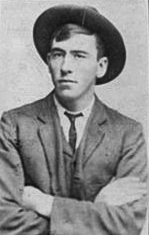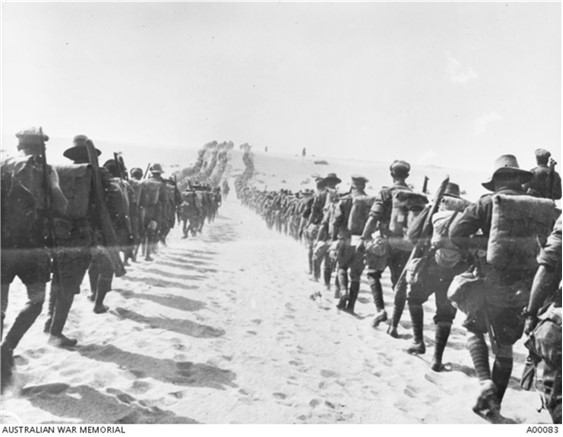William LEE
Eyes brown, Hair brown, Complexion fresh
William and Bert Lee – “One Wounded, One Lost”
Can you help find William?
William Lee was killed in Action at Fromelles, but his body has never been identified.
A mass grave was found in 2008 at Fromelles, a grave the Germans dug for 250 Australian soldiers they recovered after the battle. As of 2024, 180 of these soldiers have been able to be identified via DNA testing.
We welcome all branches of his family to come forward to donate DNA to help with his identification.
If you know anything of contacts for William, please contact the Fromelles Association. See the DNA box at the end of the story for what we do know about his family.
Early Life
Willliam Lee, known as Will was born on 8 October 1884 in Bungaree, Victoria (near Ballarat) to John Russell Lee and Isabella McClennan. He was baptised in 1889. His younger brother, Thomas Albert Pratt Lee (known as Bert), was born around 1896 in Ballarat East. Their mother Isabella had previously been married to James Kearney and had three children with him, so the brothers grew up in a large, blended family.
Half-siblings:
- Elizabeth Kearney (1875–1973)
- James Kearney (1878–1889)
- Isabella Kearney (1880–1973)
Full siblings:
- John Charles Lee (1882–1953)
- William Lee (1884-1916) KIA Fromelles
- Joseph Daniel Lee (1887–1954)
- Mary Ann Lee (1889–1968)
- Evelyn "Eva" Clarence Jane Lee (1893–1976)
- Thomas Albert Pratt Lee (Bert) (1896–1966) wounded at Fromelles
As a young man, Will worked as a labourer and served for three years in the Ballarat Infantry of the Citizen Military Forces. Bert also worked as a labourer. By 1908, the family were living in Berringa, Corangamite, Victoria and by 1913, they had moved to 19 Little Charles Street, Abbotsford in Melbourne. On 30 January 1907, Will married Martha Elizabeth Baker at the Congregational Church in Ballarat.
Will continued his life of being in a large, blended family - Martha already had two children, Elma Dorothy Baker (1901–1972) and Frances Grace Baker (1906–1966) and then Will and Martha had six children - Mary Isabel Lee (1907–1961), George Will John (Billy) Lee (1909–1976), Evelyn Florence Louisa (Louise) Lee (1911–2000), Marjorie Alice Lee (1912–1912) died infancy, Albert James Daniel Lee (1913–1914) died infancy and Violet Hilda (Bonnie) Lee (1914–1984).
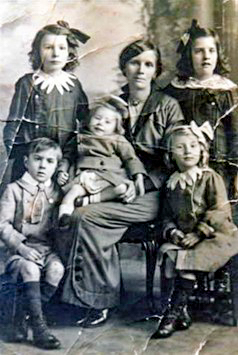
Off to War
By the time war broke out, Will was a married father of 6 at the age of just 31, while Bert was 19 and still living at home. Despite their age difference, the brothers were side by side in uniform - Will enlisted on 12 July 1915 and Bert just two days later. Their consecutive regimental numbers were 3071 and 3072. Both were assigned to the 10th Reinforcements of the 6th Battalion. Bert needed his mother’s endorsement to enlist, which was willingly given.
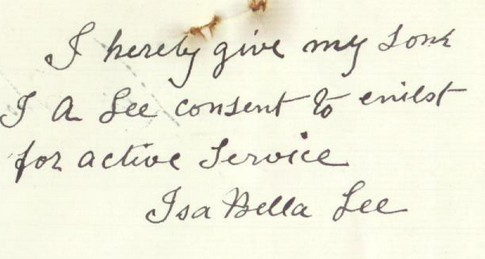
They embarked together from Melbourne on 29 September 1915 aboard HMAT RMS Osterley, headed for Egypt. With the ‘doubling of the AIF’ as it expanded from two infantry divisions to five, major reorganisations were underway at the 40,000-man training camp at Tel-el-Kebir, about 110 km northeast of Cairo. The brothers were transferred first to the 58th Battalion on 17 February 1916 at Serapeum and then to the 60th Battalion.
Roughly half of the soldiers in the 60th were Gallipoli veterans from the 8th Battalion, a predominantly Victorian unit, and the other half were fresh reinforcements from Australia. In mid-March they were inspected by H.R.H the Prince of Wales.
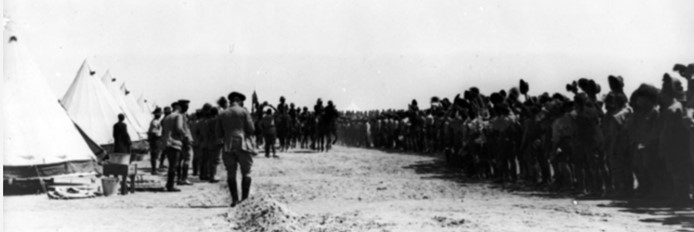
At the end of March, they had a two+ day, 50 km march in thermometer-bursting heat across the Egyptian sands from Tel-el-Kebir to Ferry Post, near the Suez Canal. Prior to marching, only ½ pint of water per bottle was available.
Source: AWM4 23/15/1 15th Brigade War Diaries Feb-Mar 1916 p6
They remained at Ferry Post until 1 June continuing their training and were guarding the Suez Canal from any potential threats posed by the Ottoman Army. Will was promoted to Lance Corporal on 5 May 1916, likely recognising his experience and maturity. Their time in Egypt was not all work, however. A 5th Division Sports Championship was held on 14 June, which was won by the 60th’s 15th brigade. On 17 June they received orders to begin the move to the Western Front and were on trains to Alexandria.
The majority of the battalion, 30 officers and 948 other ranks, embarked in Alexandria on the transport ship Kinfauns Castle on 18 June 1916. After a stop in Malta, they arrived in Marseilles on 29 June and were immediately put on trains, arriving in Steenbecque in northern France, 35 km from Fleurbaix on 2 July. This area near Fleurbaix was known as the “Nursery Sector” – a supposedly relatively quiet area where inexperienced Allied troops could learn the harsh realities of Western Front trench warfare against the Germans. But the quiet times and the training period did not last long.
On the 7th they began their move to the front, arriving in Sailly on the 9th. Now just a few kilometres from the front, their training continued, although with a higher intensity. The move to Fleurbaix continued and 60th were into the trenches for the first time on 14 July.
The Battle of Fromelles
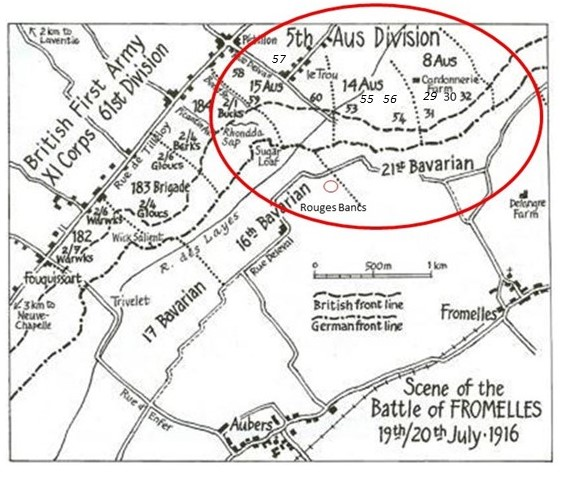
The battle plan had the 15th Brigade located just to the left of the British Army. The 59th and 60th Battalions were to be the lead units for this area of the attack, with the 58th and 57th as the ‘third and fourth’ battalions, in reserve. The main objective for the 15th Brigade was to take the trenches to the left of a heavily armed, elevated German defensive position, the ‘Sugar Loaf’, which dominated the front lines. If the Sugar Loaf could not be taken, the other battalions would be subjected to murderous enfilade fire from the machine-guns and counterattacks from that direction.
As they advanced, they were to link up with the 59th and 53rd Battalions on their flanks. On 17 July, they were in position for the major attack against the Sugar Loaf position, but it was postponed due to unfavourable weather. There was a gas alarm, but luckily it was just that. Two days later, Zero Hour for advancing from their front-line trenches was to be 5.45 PM, but the Germans knew this attack was coming and were well-prepared. They opened a massive artillery bombardment on the Australians at 5.15 PM, causing chaos and many casualties.
A fellow soldier, Private Bill Boyce (3022, 58th), summed the situation up well:
“What have I let myself in for?”
The first of four waves of Aussies went over the parapet at 5:45 PM in four waves at 5 minute intervals, but then laid down to wait for the support bombardment to end at 6 PM. A & B Companies were in the first two waves, C & D in the next two. Casualties were immediate and heavy. The 15th Brigade War Diaries captures the intensity of the early part of the attack – “they were enfiladed by machine guns in the Sugar Loaf and melted away.”
Source: AWM4 23/15/5, 15th Brigade War Diaries July 1916 page 56
The British 184th Brigade just to the right of the 59th met with the same resistance, but at 8.00 PM they got orders that no further attacks would take place that night. However, the salient between the troops limited communications, leaving the Australians to continue without British support from their now exposed right flank. It was reported that some got to within 90 yards of the enemy trenches. One soldier said:
"he believed some few of the battalion entered enemy trenches and that during the night a few stragglers, wounded and unwounded, returned to our trenches."
Fighting continued through the night. With known high casualties in the 60th, they were relieved by the 57th Battalion at 7.00 AM. Roll call was held at 9.30 AM. Official War Historian, C.E.W. Bean recorded:
“Of the 60th Battalion, which had gone into the fight with 887 men, only one officer and 106 answered the call.”
To get some perspective of the battle, when Charles Bean, Australia’s official war historian, attended the battlefield two and half years later, he observed a large quantity of bones, torn uniforms and Australian kit still on the battlefield. The final impact of the battle on the 60th was that 395 soldiers were killed or died of wounds, of which 315 were not able to be identified. To date (2024), two of these soldiers have been identified from the mass grave that the Germans had dug, which was found in 2008.
After the Battle
Will was reported missing after the battle, but there are no witness statements available as to what happened to him. Bert was wounded in the same attack. He suffered gunshot wounds to the chest, buttocks, and right leg. He was evacuated from the battlefield under harrowing conditions and transported to England for treatment. While recovering at the Manor House Hospital in Folkestone, Bert tried desperately to find out what had happened to Will.
A poignant letter sent on his behalf by Miss E. Mackenzie, a V.A.D. nurse, dated 7 August 1916, captures his anguish:
“I am asked by a wounded Australian soldier, now a patient at the Manor House Hospital here, to aid him in finding out the whereabouts of his brother, who is also believed to have been wounded on July 20th.
The missing man's name is Lance Corporal W. Lee, 3071, 60th Battalion, 15 Infantry Brigade, 5 Division, Australian Imperial Forces.
I do not know & cannot find out here, where I should apply for this information – would you kindly forward my letter to the department in London, which deals with the Australian casualties – I have no doubt that you will know the proper department.
It will be a great obligation to the wounded brother here, if you could put him in the way of getting the information he desires.
Both brothers were in the same battalion, and wounded in the same charge near Armentieres, have not seen each other since.
Yours very truly,(Miss) E. Mackenzie (V.A.D.), Manor House Hospital.”
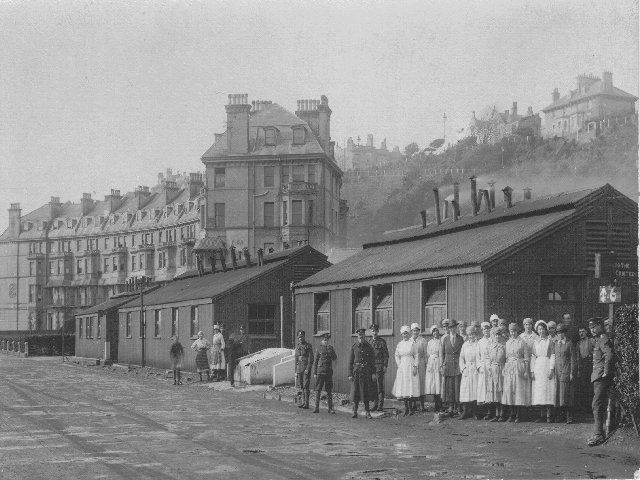
Back home, their mother of Abbotsford received a comforting letter from England in October 1916, reported in The Age:
“That England is ready to repay its debt to the Australian soldier is shown by a letter received by Mrs Lee, of Abbotsford, from a Red Cross representative at Folkestone. The writer of the letter had interviewed Mrs Lee's son, Private A. Lee, of the 60th Battalion, who was wounded and is in an English hospital, and after mentioning the fact that the son is getting on well, he adds, "Kindly convey to the women at home in Australia that all their dear ones who arrive at this hospital will always get well, if anything in this world either skill or expense can cure them. We in England can never forget the debt that is owed to them."
Will’s body was never recovered. After going through extensive searches, a Court of Enquiry in the field confirmed he had been killed in action on 19 July 1916. Today, he is commemorated at VC Corner Cemetery Memorial, one of the many ‘Known Unto God’. Bert was medically discharged as unfit for further service due to his injuries and deafness.
Despite this, Bert rebuilt his life in Victoria. He married Myrtle Madaline Goddard in 1918 and worked to support their household, carrying the memory of his brother with him always. Bert died on 23 February 1966 in Preston West, Victoria, Australia and in commemorated at the Garden of Rememberance, Fawkner Cemetery. His son, George Will John (Billy) Lee, would later honour his father’s legacy by enlisting in the Second World War, continuing the family’s tradition of service. Will’s family published multiple heartfelt tributes in the years following his death, reflecting their ongoing grief and love.
1917:
LEE. – On 19th July, 1916, at Armentieres, previously reported missing, Lance-Corporal Will Lee, beloved son of Mrs. B. Lee, and brother of Lizzie, Belle, Jos, Mary, Evelyn, and Pte. T. A. Lee, aged 32 years.Somewhere in France he fought and fell,Fighting for King and country,We pray his soul will rest in peace.He bravely did his duty.
1918:
LEE. – In loving memory of dear Will (Lance-Cpl. Will Lee), killed in action at Armentieres, July 19, 1916.Until the day breaks and shadows flee away.– Inserted by his loving sister, I. Boothey, Lake Charm.
1919:
LEE. – In loving memory of my dear son and brother, Lance-Corp. W. Lee, killed at Fleurbaix, France, on 19th July, 1916, brother-in-law of Sarah and dear uncle of Emmie, Jean and Elsie.Ever remembered.Though absent from amongst us, Will,Our thoughts are ever with you still.– Inserted by his loving mother, brother and sister-in-law, Joe and Sarah.
LEE. – In loving memory of dear Will, killed in action at Armentieres 19th July, 1916.To memory ever dear.– Inserted by his loving sister, Belle.
Will is commemorated at:
- VC Corner Cemetery Memorial, Fromelles
- Australian War Memorial Roll of Honour, Panel 170
Finding Will
After the battle, the Germans recovered 250 Australian soldiers and placed them in a burial pit at Pheasant Wood. This grave was discovered in 2008 and since then efforts have been underway to identify these soldiers by DNA testing from family members.
As of 2024, 180 of the soldiers have been identified, including two of the 315 unidentified soldiers from the 60th. We welcome all branches of the family to come forward to donate DNA to help with the brothers’ identifications.
We hope that one day Will will be named and honoured with a known grave.
If you know anything of Will’s family contacts, please contact the Fromelles Association.
Please visit Fromelles.info to follow the ongoing identification project and the brothers’ story.
DNA samples are being sought for family connections to
| Soldier | William Lee (1884–1916) |
| Parents | John Russell Lee (1836–1920) and Isabella McClennan (1854–1927) |
| Siblings | John Charles (1882–1953) | ||
| Joseph Daniel (1887–1954) | |||
| Mary Ann (1889–1968) | |||
| Evelyn Clarence Jane "Eva" (1893–1976) | |||
| Thomas Albert Pratt (Bert) (1896–1966) |
| Half-Siblings | Elizabeth Kearney (1875–1973) | married Mr Auld | |
| James Kearney (1878–1889) | deceased | ||
| Isabella Kearney (1880–1973) | married Mr Boothby | ||
| Mary Ellen (born 1883–1965) |
| Children | Elma Dorothy Baker (1901–1972) | ||
| Frances Grace Baker (1906–1966) | |||
| Mary Isabel Lee (1907–1961) | |||
| George William John (Billy) Lee (1909–1976) | |||
| Evelyn Florence Louisa (Louise) Lee (1911–2000) | |||
| Marjorie Alice Lee (1912–1912) | |||
| Albert James Daniel Lee (1913–1914) | |||
| Violet Hilda (Bonnie) Lee (1914–1984) |
| Grandparents | ||||
| Paternal | Richard Russell Lee (1796–1866) and Mary Ann Fry (1812–1892) | |||
| Maternal | Charles McLennan (1829– ) and Isabella McBean (McBain) (1836–1867) |
Seeking DNA Donors

Contacts
(Contact: carla@fromelles.info or geoffrey@fromelles.info).
(Contact: army.uwc@defence.gov.au or phone 1800 019 090).
Donations
If you are able, please contribute to the upkeep of this resource.
(Contact: bill@fromelles.info ).

